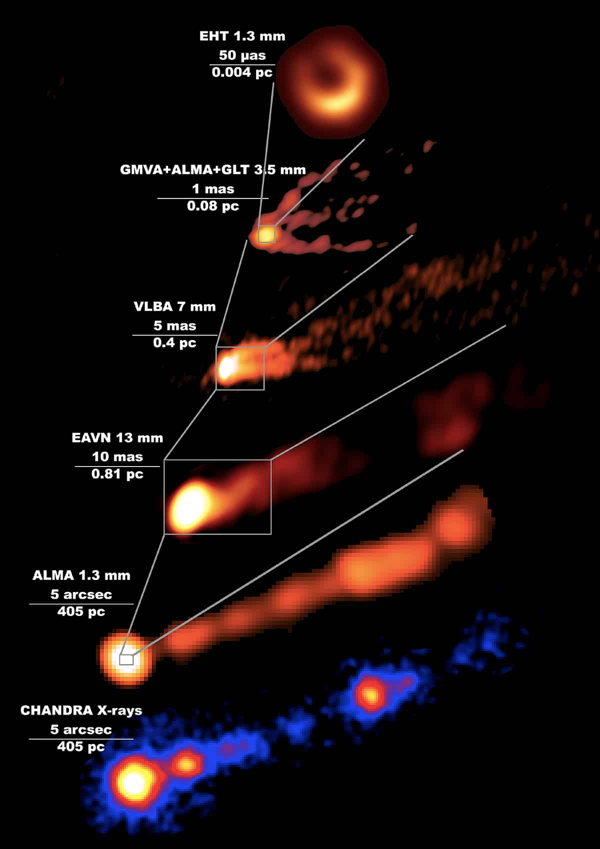For the first time, a "photographed" black hole has produced a rare flare.
The Messier 87 galaxy (M87) has a diameter slightly larger than that of the Milky Way, but its mass may exceed it by about two hundred times. Unlike our spiral galaxy, M87 is elliptical: a massive sphere filled with stars. It is located 53.5 million light-years away from us in the direction of the Virgo constellation and is particularly interesting due to its extremely active core, which is a supermassive black hole that is intensely consuming surrounding matter.
This black hole was chosen by astronomers as the first one that humanity would see. The silhouette image was created using data from the Event Horizon Telescope array and was released in 2019. The black hole is discernible only due to the bright outline of the matter being pulled towards it — the accretion disk. This disk turned out to be heterogeneous, with brighter, denser areas. All of this rotates around the event horizon at enormous speeds.
Recent estimates suggest that the mass of this black hole is 6.5 billion solar masses. In terms of size, it could fit within the orbit of Pluto, meaning it is smaller than our Solar System. For comparison, the black hole at the center of the Milky Way weighs about four million suns and has a diameter roughly the same as Mercury’s orbit.
The black hole in M87 is absorbing so much matter that it simply cannot handle it, resulting in excess material being expelled from both poles in gigantic plasma jets known as "relativistic jets." One of these jets is directed almost straight towards Earth — at an angle of about 20 degrees. This jet stretches nearly five thousand light-years long. The one on the opposite side is expected to be similar.
Recently, an international and very large team of astrophysicists shared their latest observations of the core of M87 from 2018 in the journal Astronomy and Astrophysics and compared them to how this supermassive black hole appeared during the previous session in 2017. It was found, firstly, that over the year, the accretion disk (and hence the entire disk) had shifted by 30 degrees. Secondly, the relativistic jet is gradually, "monotonically" shifting, and this has been noted before.

Thirdly, for the first time since 2010, a sudden powerful gamma-ray burst occurred again in the vicinity of the M87 center, which had been observed several times before but has yet to be fully explained. This time, it was much weaker than previous occurrences; nevertheless, the radiation was about four times more intense than during "calm" periods.
The burst lasted approximately three days. Astrophysicists noted that it was observed exclusively in the gamma range for some reason. The exact location from which the radiation originated could not be determined. However, scientists pointed out that the area of the burst is relatively small — only about ten times larger than the black hole itself.
Speculations about the nature of this gamma-burst are still being formed. There is a suspicion that it is related to the magnetic field of the black hole. For example, one theory suggests that strongly and weakly magnetized flows sporadically collide within it, generating a shock wave.